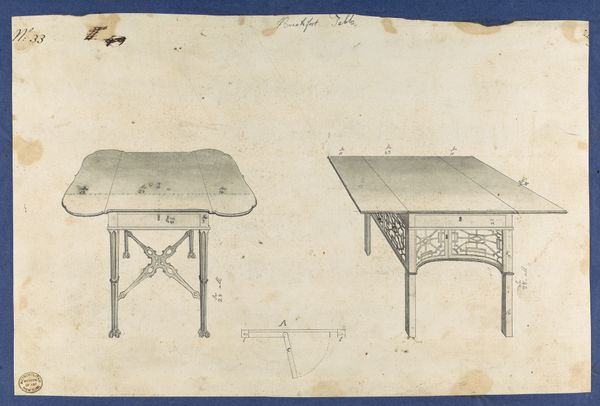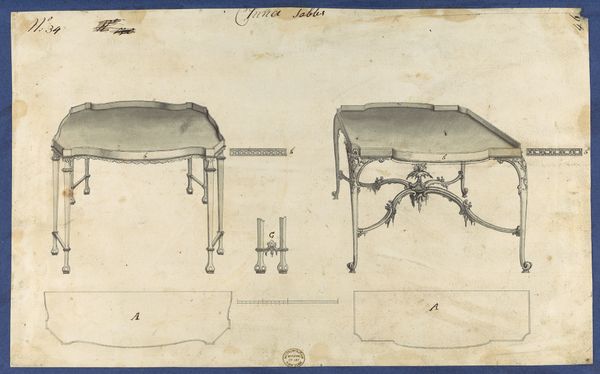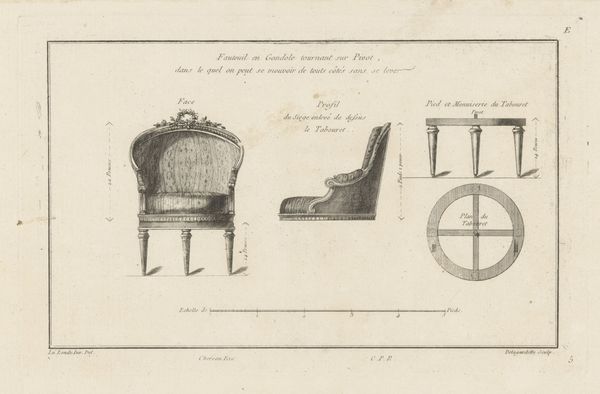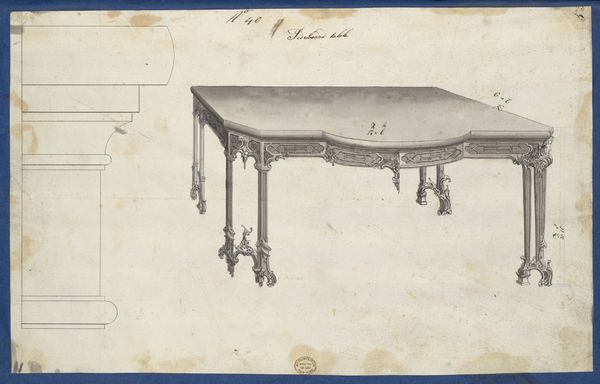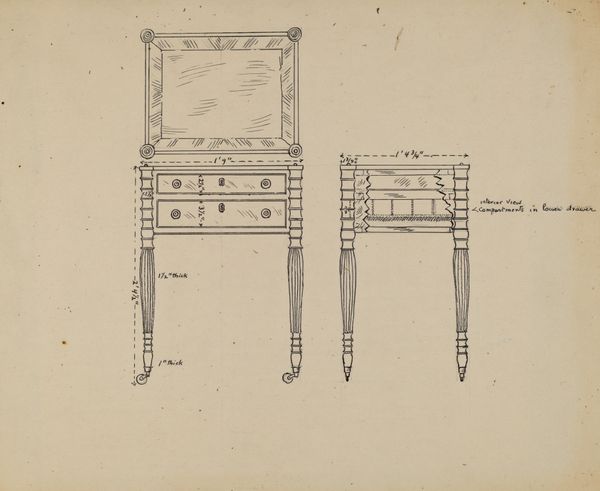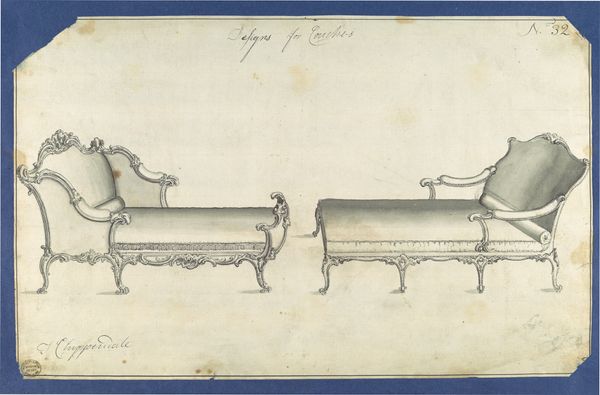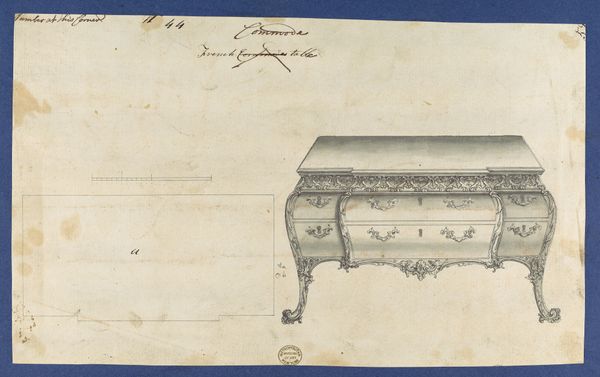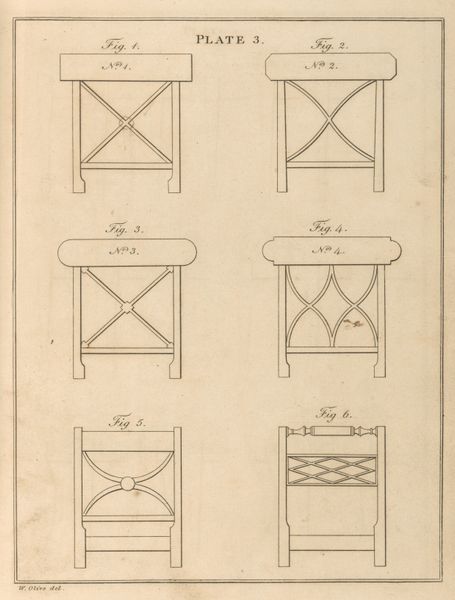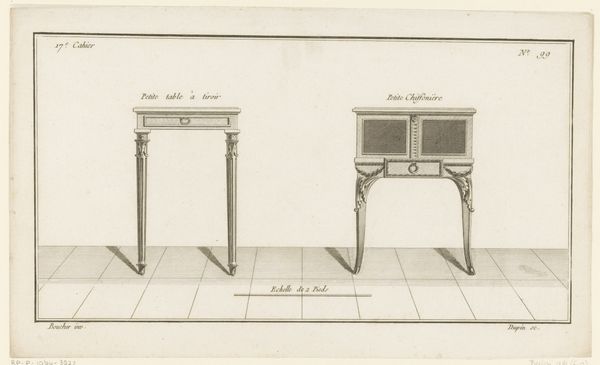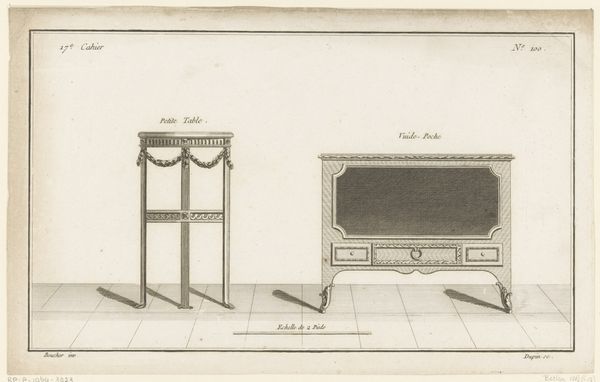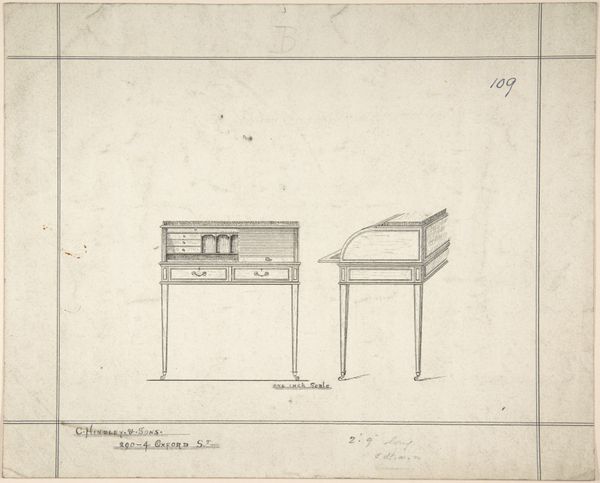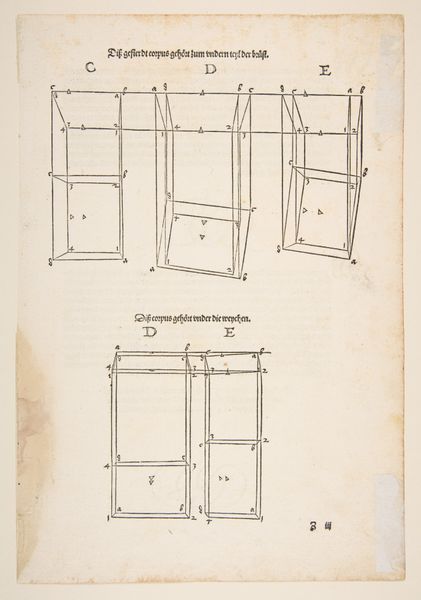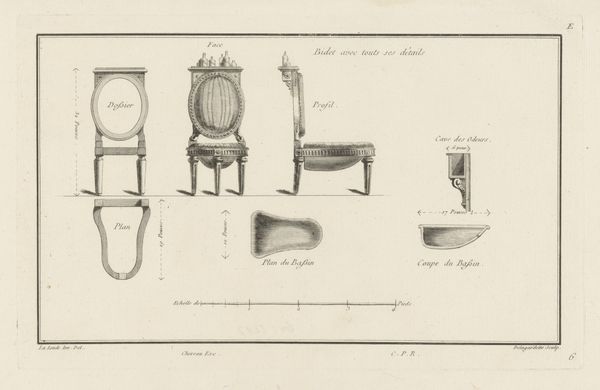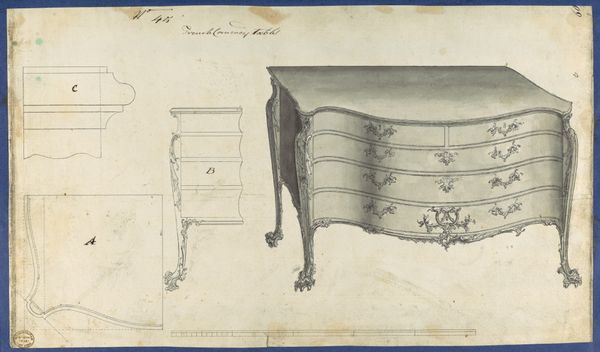
drawing, print, paper, ink
#
drawing
#
medieval
# print
#
paper
#
ink
#
geometric
Copyright: Public Domain
Editor: We're looking at "Designs for an Armchair and Side Chair," created anonymously sometime between 1700 and 1800. It's an ink drawing on paper, a print held at the Metropolitan Museum of Art. I'm immediately struck by the geometric forms – very clearly articulated. What do you see in terms of its pure composition and structure? Curator: What strikes me first is the duality inherent in the piece. We have two distinct chair designs presented on a single plane. The draftsman, using ink to delineate form on the paper, presents not just objects but relationships. Consider the spatial relationships: How does the relatively ornate armchair on the left engage with the more austere side chair on the right? Editor: They definitely feel different, like different styles or different eras, maybe? One's clearly meant to be fancier. Curator: Indeed. We see a contrast established through line and form. Notice the sinuous curves of the armchair's legs and armrests, their elegant ornamentation playing against the right chair's straighter lines, blockier shapes, and simplified aesthetic. Ask yourself, how does each chair utilize the same fundamental elements—seat, back, legs—but to vastly different visual effect? The language of geometry is deliberately deployed, differentiating not just design but implicitly, perhaps, notions of status and function. Editor: So, it's about how these basic geometric forms, line, shape, are used so differently to create very distinct impressions? It seems that analyzing those differences gets us to the deeper meaning. Curator: Precisely. By attending to the formal arrangements—the relationships between lines, the tension between curves and angles, and the overall balance within the composition—we can decode the essence of these designs. Editor: That's a fascinating perspective. I hadn't considered how much information could be gleaned from analyzing just the formal elements. Thank you! Curator: My pleasure. Remember, the language of form often speaks volumes, if we take the time to listen.
Comments
No comments
Be the first to comment and join the conversation on the ultimate creative platform.
